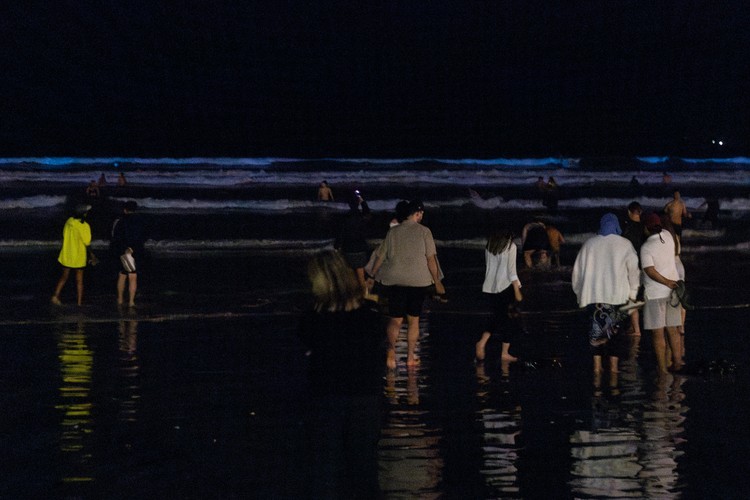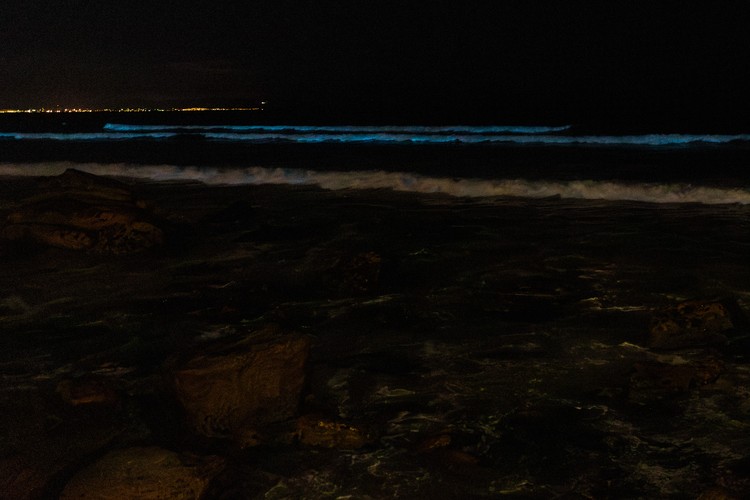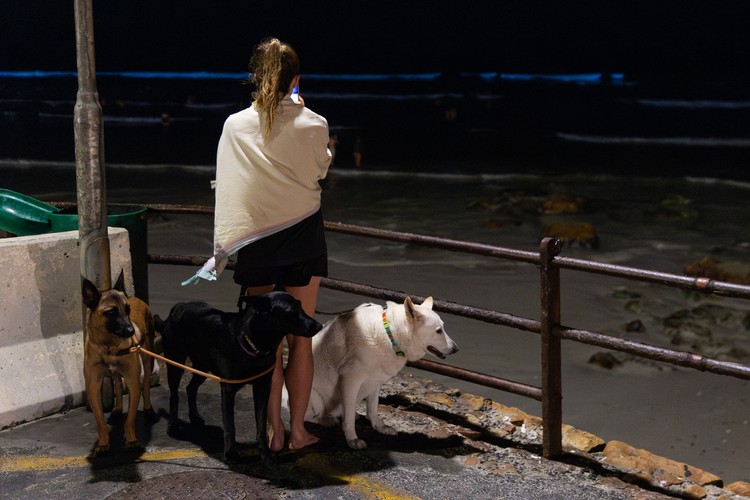In photos: Beautiful bioluminescence at Muizenberg
Red tide lights up False Bay coast
People flocked to Muizenberg beach on Monday night to watch the bioluminescence associated with a red tide. Photos: Ashraf Hendricks
If you’ve been to the False Bay coastline over the past two nights, you might have noticed a strange bright blue glow on the crests of the waves near the shoreline. Don’t worry, the sea hasn’t become radioactive, it is a natural phenomenon called bioluminescence (sea sparkle).
“It is all completely natural,” says Dr. Emma Rocke, a microbiologist and research fellow with The Marine and Antarctic Research Centre for Innovation and Sustainability (MARiS) at the University of Cape Town. Rocke says this phenomenon happens when the ocean is calm and warm. It is expected to happen at least once a year and lasts three to five days.
Rocke explains that the calm and warm conditions cause these algae to multiply, and they then glow when they are agitated and rub up against one another. Rocke says the bloom is a good thing as it is “producing oxygen and consuming carbon dioxide”. The presence of so much algae attracts prey, so you’ll also see more fish in the ocean.
The algae rubbing up against each other causes the crests of the waves to turn blue.
“They need light and nutrients to grow, which will eventually be used up,” says Rocke.
She says she is almost certain that the algae is Noctiluca scintillans, and although certain species are toxic, this isn’t one of them. But she will need to confirm this under a microscope.
Rocke says the bioluminescence is connected to the red tide. And if you can see the red tide in the day, and the conditions stay the same, you’ll most likely see the glow of the bioluminescence in the evening.
The phenomenon happens all around the world and can also happen in freshwater.
The dogs insisted on looking in the wrong direction.
Support independent journalism
Donate using Payfast

Don't miss out on the latest news
We respect your privacy, and promise we won't spam you.
Next: Taps have been dry in this Durban community for more than a decade
Previous: Union vows to fight “slaughter” of Post Office jobs
© 2024 GroundUp. This article is licensed under a Creative Commons Attribution-NoDerivatives 4.0 International License.
You may republish this article, so long as you credit the authors and GroundUp, and do not change the text. Please include a link back to the original article.
We put an invisible pixel in the article so that we can count traffic to republishers. All analytics tools are solely on our servers. We do not give our logs to any third party. Logs are deleted after two weeks. We do not use any IP address identifying information except to count regional traffic. We are solely interested in counting hits, not tracking users. If you republish, please do not delete the invisible pixel.



